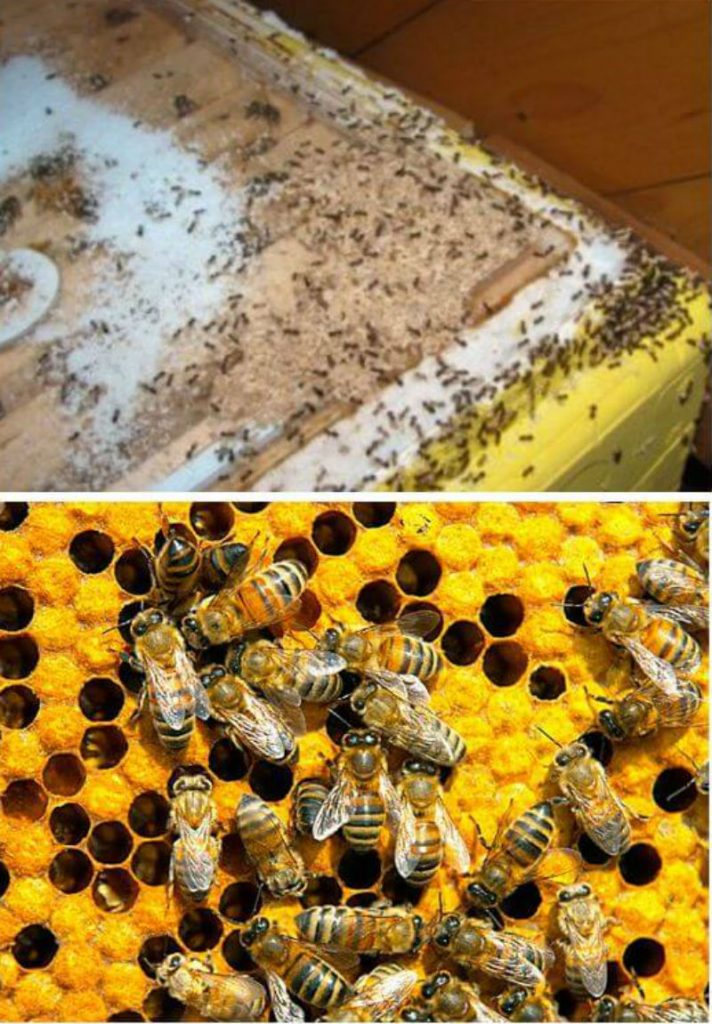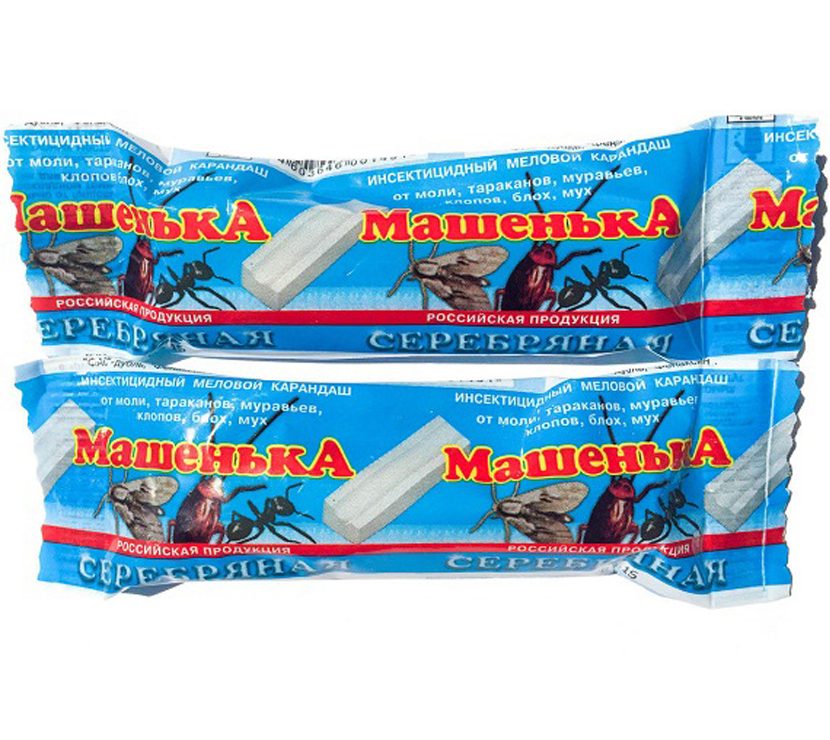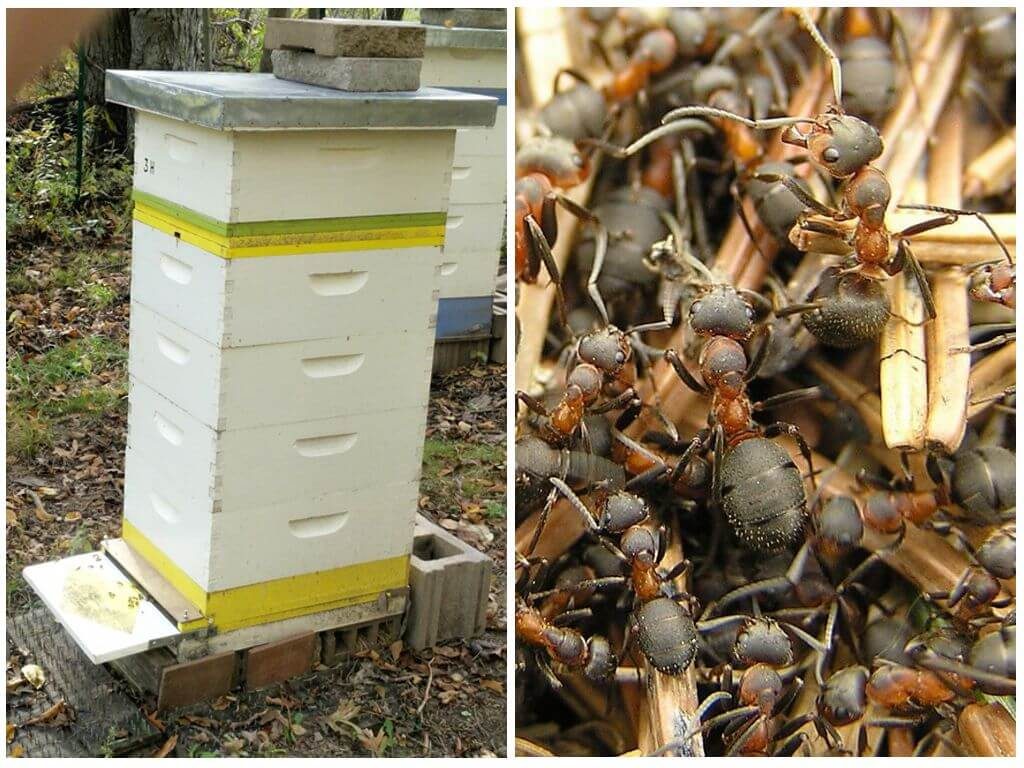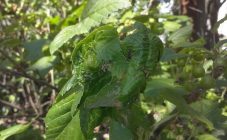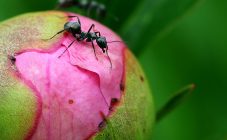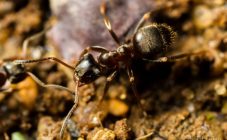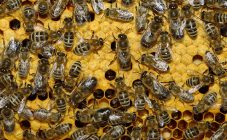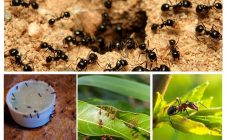Content:
Rarely in any apiary you will not find ants. These little orderlies of the forest for honey plants are uninvited guests. They are attracted by honey, to which they are great hunters. But, having penetrated into the hive, they cause significant harm. Murashi not only pollute bees' houses and pumped honey, but also harm bee colonies. If ants appear in the hive, you need to figure out how to get rid of them as soon as possible.
The harm done by ants
With a massive attack of ants on a hive, they can carry away up to 1 kg of honey per day. In addition, some species kill bees on the landing board and gnaw off the offspring. All this reduces the number of worker bees and weakens the colony. Moreover, ants, moving from one hive to another, carry various diseases. This can lead to an epidemic and the death of all families.
Uninvited guests pollute the hive with their waste and disturb the bee colony. Garden ants do more harm to bees. They not only steal honey, but also live in hives. Such uninvited guests should be destroyed. But forest ants perform the role of orderlies in the apiary, removing the corpses of dead bees. In the fight against them, you should adhere to the golden mean.
Ant fighting: the best remedies
Getting rid of ants is difficult. For complete extermination, you will have to destroy the anthill. It will be much more effective to scare them away from the apiary.
How to get rid of ants in an apiary without breaking the law?
The best way to fight is prevention. In the spring, care should be taken to protect the bees from ants. For this, the hive must be placed on iron supports with smooth legs. If the coasters are wooden, lay polyethylene under the bee house, leaving the ends hanging about 10 cm. Such preventive measures will prevent ants from getting into the hive.
From the means of the chemical industry in the fight against the invaders, a small machine will help. The legs of the stand are coated with it, but after each rain, the procedure should be repeated. Means of contact action have also proven themselves well. You can buy special preparations for ants. After using them, within a week there will be no trace of them.
- Anteater insecticide. Acts only on ants and has become a real deliverance from them. Can be applied directly to hives.
- The ant is produced in the form of granules, which should be dripped into the territory of the anthill.
- Fitar is a paste containing the poison of a fungus that is deadly for ants. A small amount of paste is applied to cardboard and laid out near the intruders' accommodation.
- Thunder-2 - granules containing poison that blocks breathing. It is scattered around the anthill. After 2 days, the pests disappear.
- Throw is a ready-made powder that paralyzes the vital processes of ants. They need to sprinkle on the anthill and insect paths. The action is almost instantaneous.
Ultrasonic repellents and insect traps can be used.
Folk remedies for fighting ants in the apiary
It so happens that the beekeeper does not have the opportunity to purchase a chemical preparation.How to deal with ants in the apiary in this case? Folk methods will come to the rescue. All substances used in these can be found in the apiary.
- A radical method in the fight against ants was a mixture of dry yeast and jam. For this, 1 tbsp. a spoonful of dry yeast is stirred with 1 tbsp. spoon of jam, add 5 g of boric acid. Place this mixture in small saucers along the ant paths. You can do this tool without boric acid. Yeast itself is a strong poison for ants. After 3 weeks, the pests will disappear. The main thing is to cover the containers with yeast with a net through which the bees will not get to the poison.
- Using onions. The onions are finely chopped to extract as much juice as possible. The resulting gruel is laid out in the apiary, paying special attention to the ant paths. The next day there will be no pests. The disadvantage of this method is that the bow will need to be laid out quite often to protect the bees.
- Salt or ash is sprinkled on the ground around the bee houses. A barrier is created through which the ants cannot get over. They will disappear in a few days.
- Millet is poured under the cover of the hive and on the ant paths. Insects transfer it to an anthill, in dampness it rots. The gas released is harmful to the ants.
- Bottles with sweet water are placed around the apiary. The top of the bottle is trimmed and the cap removed. The cut off top is turned upside down and inserted into the bottom of the bottle. Having climbed into such a trap, the ants cannot get out of it.
- Spread the hive stands and ant paths with fuel oil, used oil or vegetable oil. Pests will not be able to get over such an obstacle and will leave to look for food elsewhere.
- Place the legs of the racks in a container of water. Such a device will prevent insects from entering the hives.
- Ants don't like strong-smelling plants. Mint, tomatoes, wormwood will scare them away from the bees. You can put tomato leaves, wormwood under the cover of the hive.
- In the spring, you can set up ant traps. Empty cans are stuffed with moss and set upside down in the apiary. Murash should settle there in 2 weeks. It remains only to collect the traps and, together with the new residents, take them outside the site.
- A laborious and not always successful method is to dig up the anthill and move it outside the apiary. The queen ant must move along with the entire anthill. Otherwise, the insects will return.
- Sprinkle mustard on the paths from the anthill to the area with the bees. Little hard workers do not like its smell and will leave to find food in the other direction.
Tips and tricks from beekeepers
Experienced beekeepers are happy to give advice on how to deal with ants in a bee hive. Here are some tips:
- Walk around the apiary several times a season and remove anthills that have appeared. There should be no bees at a distance of 80-120 m from the bees.
- Keep the area clean. Grass and shrubs should be removed regularly.
- Repair the hives in time. If there are no mother-in-law and crevices, then uninvited guests will have nowhere to settle.
- Do not scatter honeycomb residues on the site. This attracts ants.
- Dig a moat with water around the apiary. This not only creates an obstacle to the ants, but also provides the bees with water.
There are many means for the destruction of ants in the apiary. It is up to the beekeeper to decide whether to use one thing or apply different methods. However, you need to reasonably approach the issue of getting rid of ants and not overdo it. You shouldn't always get rid of them. In some cases, peaceful coexistence is quite possible.
